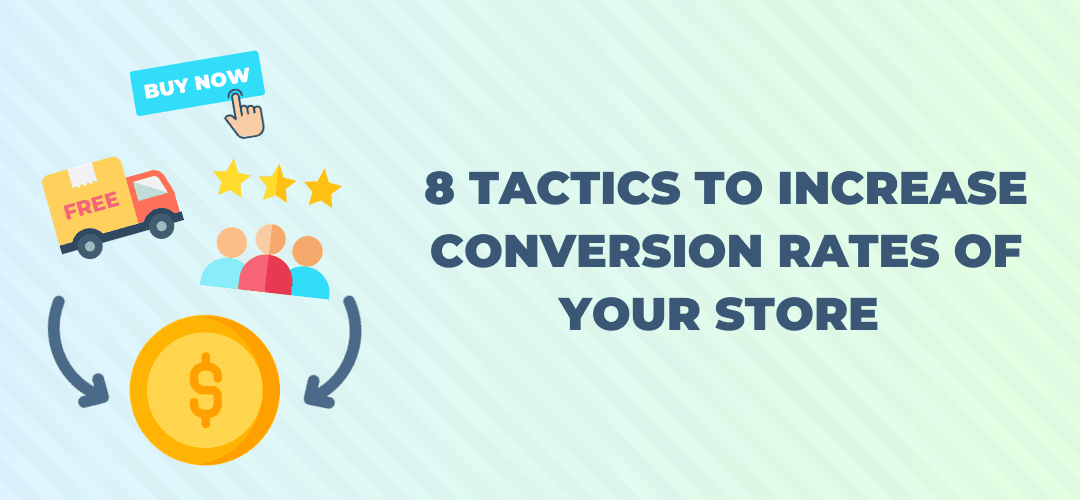
Are you wondering why you aren't making any sales even with the huge number of traffic that your eCommerce store gets?
Your marketing strategies are working quite well. You are getting a ton of traffic, but aren't making any sales. Then what's the problem?
Running a successful eCommerce store is much more than generating a ton of traffic. You need to convert this traffic into sales. Realistically, not everyone who visits your site would convert into a paying customer. What you should be concerned about is the percentage of people that visit your site and end up purchasing a product.
According to data collected by SmartInsights, the average conversion rates for eCommerce stores across industries for the Q2 of 2018 was just 2.86%. With these statistics, if 10,000 people visited your site, less than 300 of them would end up purchasing an item.
That's abysmal, right?
You do not have to worry though. Notice the keyword here is "average". You can do much better. In fact, just taking the little step of improving the customer's onsite experience with your store can increase your conversion rate by up to two to three times.
So the gist here is this - you don't need to wait for conversions to happen or you would end up with the - "average". You need to optimize your site and implement strategies that would help you increase the conversion rate of your eCommerce store.
In this article, we would be looking at 8 tactics that would help you increase the conversion rates of your eCommerce store. But before we dive into that, let's see a brief definition of conversion rate and how you calculate it.
Definition of Conversion Rate
Conversion rate is the percentage of visitors that visit a site and take a desired action (a conversion) out of the total number of visitors. These actions would vary depending on your business goal.
Desired actions could include: making a purchase, subscribing to an email newsletter, participating in a poll or survey, sharing content on social media, leaving comments, etc.
A high conversion rate would mean that people want what you are offering. So without a good value proposition, you would have a very low conversion rate.
How to Calculate Your Conversion Rate
Calculating your conversion rate would depend on what you define as your conversion event and how you plan on measuring traffic.
When calculating, your numerator would be defined by your conversion rate goal and the denominator would be defined as your total pool of traffic (which can either be leads, session counts or unique visitors).
With this description, you can use any of the three formulas to calculate your conversion rate:
Conversion rate = (Total conversions / Total number of unique visitors) × 100
OR
Conversion rate = (Total conversions / Total number of unique sessions) × 100
OR
Conversion rate = (Total conversions / Total number of leads) × 100
For an ecommerce site, the best formula to use would be the first one. So, if your site gets 100,000 unique visitors in a month and you sold 2000 shirts, your conversion rate would be 2%.
8 Tactics to eCommerce Conversion Rate Optimization
We have seen the definition of conversion rate and how to calculate it. Let's now see how to increase conversion rates.
1. Have Killer Product Images
Heard the saying - " A picture is worth a thousand words"? Well, this adage is very true!
Images bring life to your eCommerce website. People don't want just to browse through a site anymore, they want to experience it. People want to see what they are about to buy before they make their decisions (especially for medical supply eCommerce or beauty eCommerce websites ).
Using the right images can increase your site's conversions and help influence the buyer's decision.
So how exactly can you use images to increase your site's conversion?
Use high-quality images
Too many eCommerce stores make the mistake of trying to sell products with low-quality images. Customers won't take you seriously when you use images that are unappealing and unprofessional.
Your goal is to entice the customer with killer product images. Your product images should be appealing. A customer won't buy a product that looks ugly. If it looks ugly in pictures, what would it look like in real life?
MADE uses beautiful product images that are really appealing and high quality.

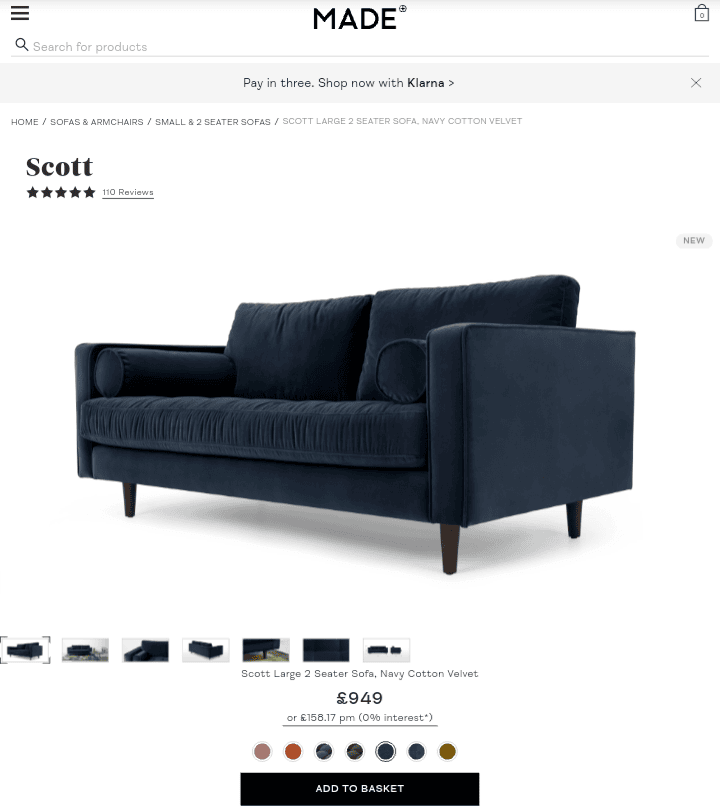
Tip: Add white space around the photo to give it more focus.
Include alternate photo angles
Don't just show one side of your product image. Upload the image from multiple angles. This would give the viewer a good idea of what they are about to buy. The faster you convince them of the awesomeness of the product, the faster you can convert them.
An example is this product image of an ax by BEST MADE CO.

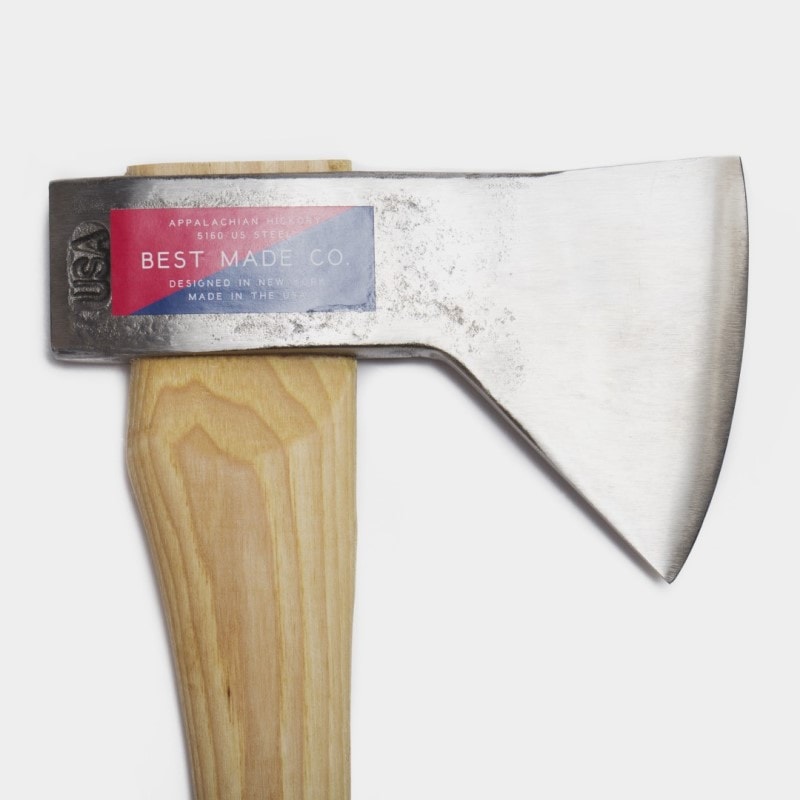
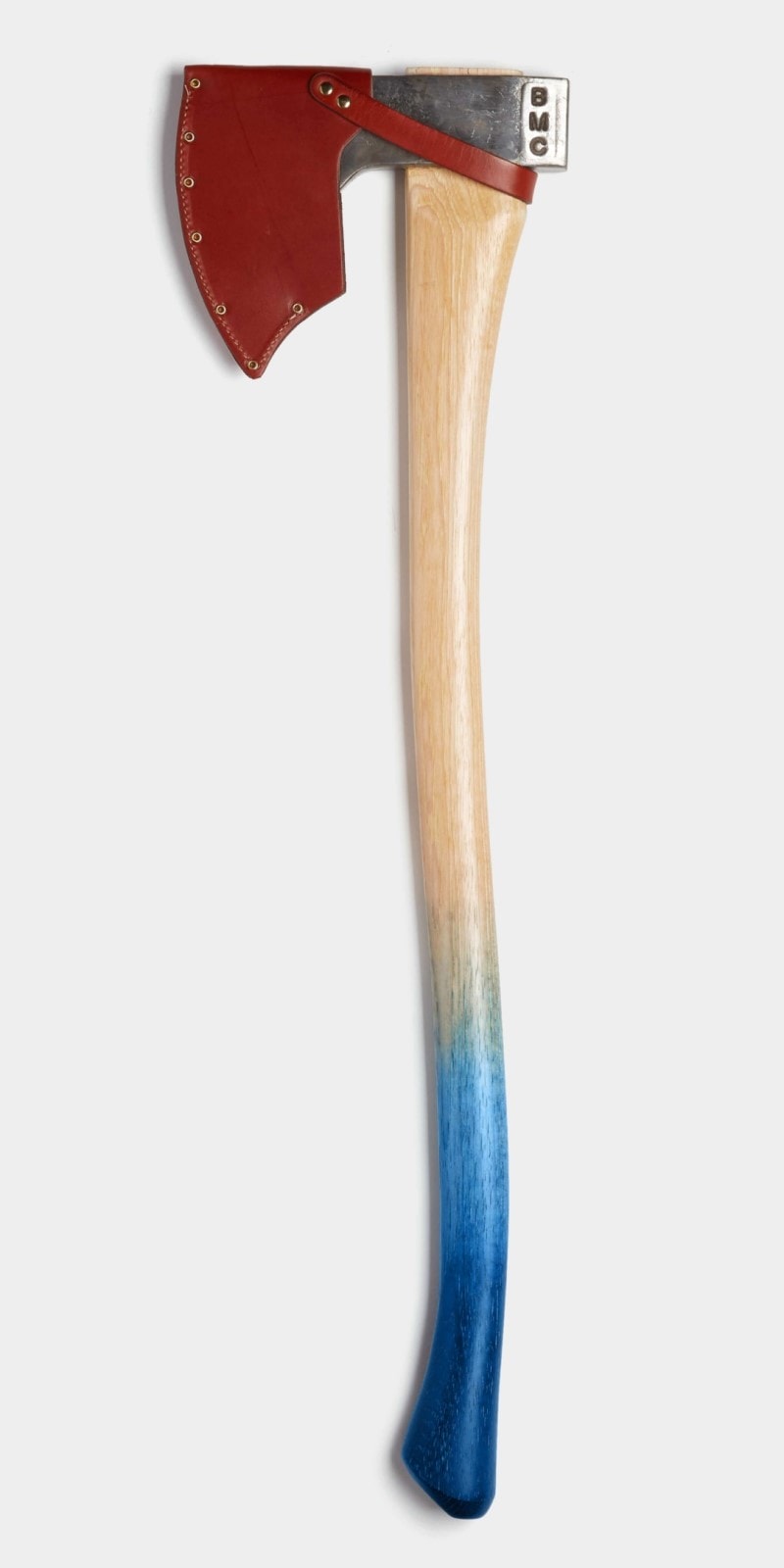
Define your audience
The image you use would also be defined by your target audience.
Miratech conducted an eye-tracking study to measure how men and women looked at a photo of this sexy young woman.
![]()
After the study, it was concluded that men spent more time looking at her chest and women looked at her ring.
While this might be a cliche, it still doesn't make it baseless. You should be aware of the kind of images to use depending on your audience.
Color psychology also plays a huge role. Color preference can also be based on gender. 35% of women say blue is their favorite color, with another 23% saying they prefer purple. So using the right colors can also help you increase conversion rates.
2. Handling Shipping Costs
The cost of shipping is one of the major factors that reduce the conversion rate of an eCommerce store. There are two strategies you can use in handling shipping.
The first and most recommended course of action is to lose the shipping cost. Free shipping is one of the key factors that would determine if a consumer would make a purchase or not.
A study by Rejoiner showed that out of 56% of all shoppers that browsed through an eCommerce store, only 19% of them placed an item in the cart. Out of this 19%, only 7% of them completed a transaction. When asked why they were abandoning the products in the cart, they responded that the shipping costs were expensive and unacceptable.
From this study, you can see that shipping costs dropped the conversion rate from 19% to 7%.
93% of buyers say they would buy a product if there is free shipping. 58% say they would add more products to the cart to qualify for free shipping.
Reducing shipping cost is great, but what if you don't have the resources to do this?
This is the second strategy to take. If you can't offer free shipping, make sure that the customer can see the shipping cost upfront. The best way to do this is by charging a flat shipping rate.
3. Show Reviews on Products
According to a customer research report by Salsify, 30% of customers use product reviews from people like them to measure if a brand or retailer understands them.

The research showed that product reviews play a huge role in convincing a customer to buy than just the quality of the product. This shows the value of product reviews when it comes to converting a customer.
In fact, consumers between the ages of 18 and 65 see positive reviews as a better indication of the quality of a product.

Adding reviews to your site isn't difficult either. You can install a free plugin or widget to show reviews on your site.
If you don't have reviews yet, you can get testimonials from previous customers and insert it into your site as testimonials.
Tip: Do not delete negative reviews also. 65% of buyers use negative reviews to determine the authenticity of the positive reviews. Buyers use negative reviews to know if they can trust the positive review. A mixture of both helps to improve brand trust and increase conversion rate.
4. Have An Effective CTA
If you don't have an effective CTA button, you would kill your conversion rate. Your goal is to give the customer the best possible experience and that includes making your CTA buttons visible.
The customer should not have to scan the entire page before they can find the check out button or go through a whole lot of stress before they can add an item to the cart.
Customers have a short attention span and if they can't find your CTA buttons fast, they are most likely to exit the store. When you create a smooth experience, you increase the conversion rate on your site.
Ensure that your CTA buttons are big and brightly colored. Don't make the mistake of using just text-based CTA buttons.
The NorthFace online store is a good example of a product page with a clear and visible CTA button.
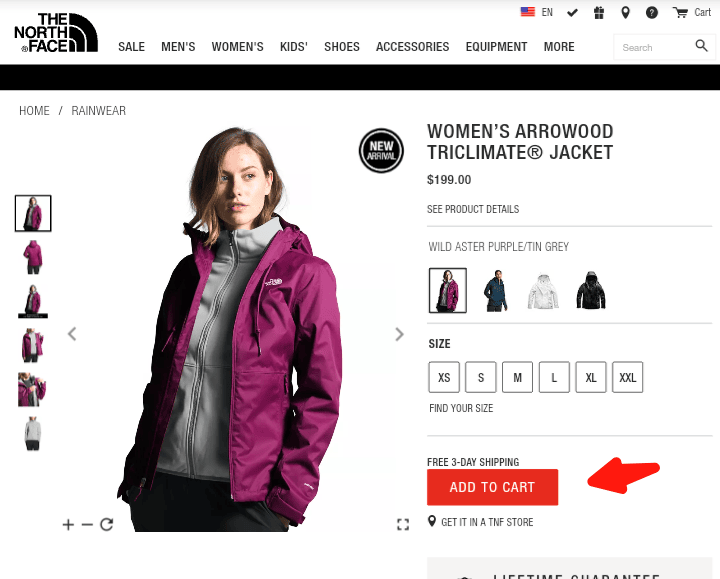
5. Personalization
Every customer is different and would have different expectations from your store. You need to personalize your store to give every visitor a unique experience.
The more you personalize your store to meet the preference of a customer, the more likely they are to make a purchase.
There are two strategies you can use in personalizing a user's experience:
- Providing dynamic content
- Providing pathways for visitors to follow
Dynamic Content
Providing dynamic content entails you tailoring products, recommendations, and offers to meet the unique preference of a visitor based on factors like demographics, geographical locations, past purchases, and on-site interactions.
Amazon is an example of a store that uses eCommerce personalization. It is one of the reasons for its huge success.
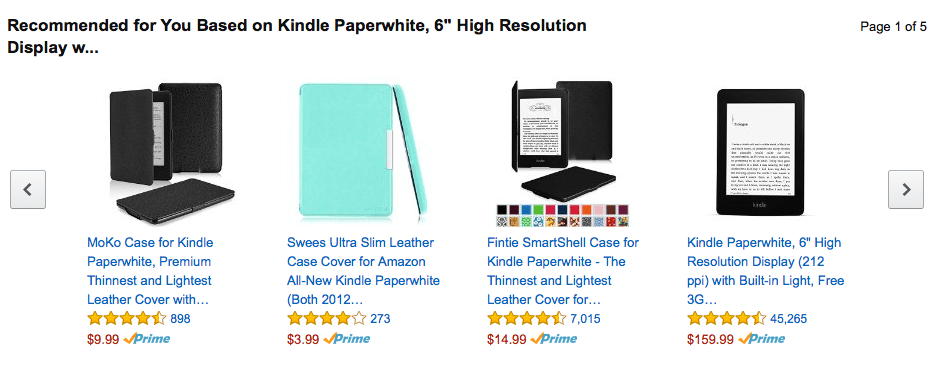
Providing pathways
To use this strategy, you would need to first define your target audience. You need to understand the type of customers that visit your site. What you would be doing is pointing them to a collection of products that are similar to each other but aren't in the same product category.
Essentially, it's like saying - this shirt is nice, but it would go well with this jacket and tie.
An example is this email sent from online clothing store Esprit. The list of products follows a progression that would draw the customer in. The products are similar and offer the customer different choices to choose from. It allows the customer to choose which style suits them best.
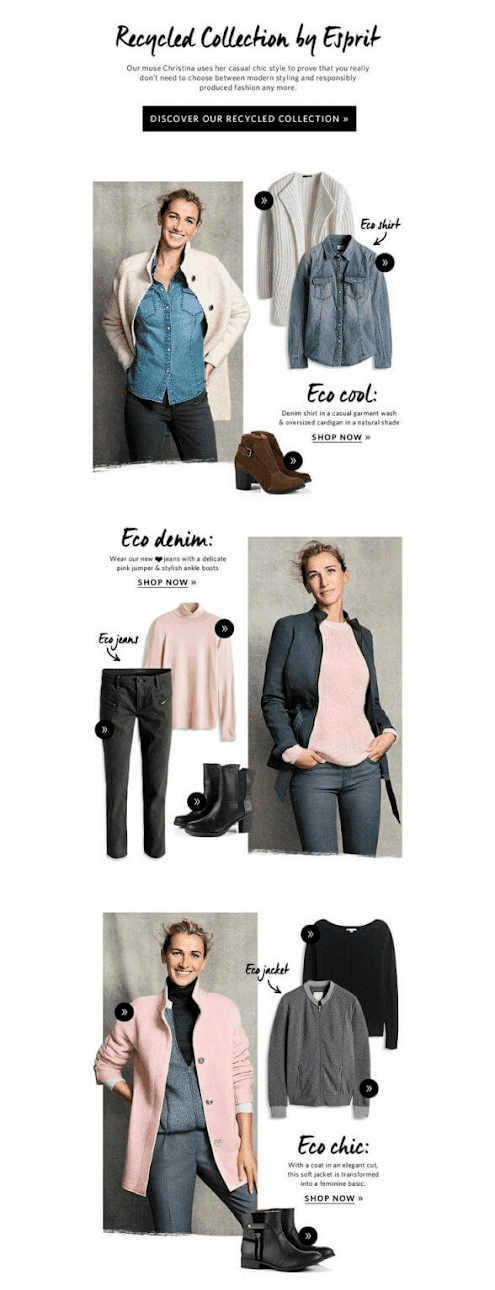
6. Simplify Your Checkout Process
The checkout process is one area you don't want to mess up. If the customer has a difficult time paying for the product, you might end up losing the customer.
Let's say you are lucky and you have a stubborn customer who insists on buying the product, you can be sure that it would be the last time they might come to your store. You shouldn't be looking for one-time conversions only. When you give a customer a smooth shopping experience, they are most likely to come back again.
According to a report from the Baymard Institute, 28% of cart abandonment occurs because of a difficult checkout process.
To improve the checkout process, you can implement these strategies:
- Use a shopping cart system that allows users to return back to your website without having to re-add items to their cart.
- After the first time a user registers to your site, retain and automatically refill their checkout form when they next they shop.
- Better yet, don't ask customers to register in order to check out. 26% of shoppers would abandon a cart when they are forced to register.
All these checkout options are available in nopCommerce.
7. Offer Discount Codes
Discount codes are a great way to urge the customer to make a purchase. You can increase sales significantly by offering discounts, especially during the holidays.
67% of customers report making an unanticipated purchase after being presented with a discount offer. Adding a discount offer can help you convert a prospect that hasn't made up their mind.
Along with increasing conversions, there are several benefits of using discount codes. Some of them include:
- Promoting newly launched products and products that aren't selling well
- Increased customer acquisition
- Increased customer retention
- Boosting customer loyalty
- Offload excess inventory
- Minimal losses
Tip: Offering discount codes on every purchase can be expensive for your business. The easiest way to get the full advantage of discount codes is by offering limited-time discounts.
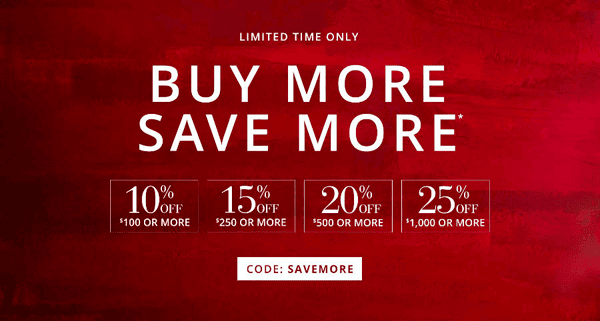
This would urge the customer to make their decision faster and reduce their chances of getting distracted.
Some examples of discount codes are:
- Buy one get one free
- Instant discount at checkout
- Offering freebies
- Referral programs
- Cash for credit
8. Reduce distraction
In a bid to make your site look good, do not add too many design elements that can become a distraction. To increase conversions, ensure that there are no distractions that can make shopping difficult.
This is an example of terrible design. It is extremely difficult to navigate, the product images are very tiny and jam-packed, and the product descriptions are hard to read.
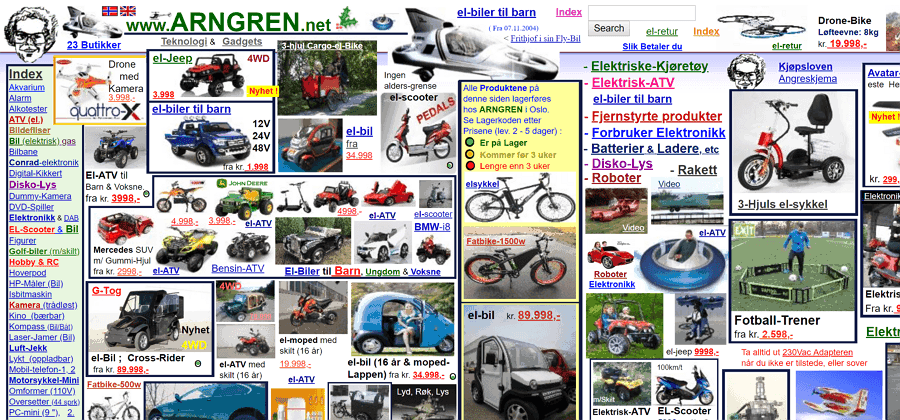
To reduce distraction on your site, these are some rules to follow:
- Use a clean layout
- The website pages should be easy to navigate
- Good color scheme
- Choose a design that is appropriate for your products and theme.
- Your content should be organized and easy to follow
- Product images should be clear and of HD quality
Less distraction equals more conversions.
Conclusion,
The conversion rate of your store would determine the success you would have as a merchant. Understanding how to improve your conversion rates is key to improving store sales.
The tactics mentioned in this article should help you get started. No matter the tactics you choose, ensure that you perform regular A/B testing. Regularly analyzing your KPIs would help you determine if your conversion rate is improving or not.
Which of these tactics would you implement in your eCommerce store today? Leave your thoughts in the comment section below.
|
|
Author Bio: Marvellous Aham-adi is a freelance writer and content marketer. He teaches individuals how to start a profitable blog, improve productivity, and grow a brand using marketing at TheZeroed. He has been featured in big brands like VWO, Social Media Examiner, and GetResponse. You can also connect with him on LinkedIn. |

Comentários